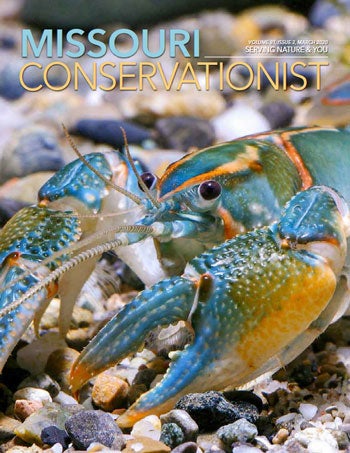Each month, we highlight research MDC uses to improve fish, forest, and wildlife management.
Resource Science
Neonicotinoids and Wetlands
Land managers often use neonicotinoids, a new class of insecticides, to control destructive agricultural pests. Neonics, as they are called, are very water soluble. That means stormwater can wash them from a treated site into nearby waterways, potentially affecting complex aquatic food webs.
“This made us wonder if neonics might be present in Missouri public wetlands, either from direct planting of treated seeds or washing from ag lands into nearby public wetlands,” said MDC Environmental Resource Scientist Doreen Mengel. “If so, what could managers do to reduce neonics in public wetands?”
From the spring of 2016 to the spring of 2017, Mengel worked with researchers Kyle Kuechle of the University of Missouri and Elisabeth Webb of the U.S. Geological Survey Missouri Cooperative Fish and Wildlife Research Unit. They focused on detecting neonicotinoids in water and sediments in 40 wetlands on 10 MDC conservation areas throughout Missouri. From these wetlands, they collected samples during four sampling periods over a year.
Analysis of 157 sediment samples showed neonicotinoid compounds in 55–76 percent of the samples, depending on sampling period.
Analysis of 149 water samples showed neonicotinoid compounds in 60 percent of all samples. However, concentrations were lower in the water samples than in sediment samples.
“We were surprised to find the concentrations were so much higher in sediments than in the water samples,” Mengel said.
The team speculated that relatively high sediment concentrations may possibly affect sediment dwelling invertebrates, which waterbirds eat, especially during migration. As a result, the team identified environmental factors that reduced neonics in wetlands.
Reducing Neonics in Wetlands at a Glance
- Avoid using neonics in areas subject to leaching or overland flow.
- Limit amount of treated crop-seed to 25% of area.
- When water is >68F, keep water level >25 cm to help break down neonics.
This Issue's Staff
Editor - Angie Daly Morfeld
Associate Editor - Larry Archer
Staff Writer - Bonnie Chasteen
Staff Writer - Heather Feeler
Staff Writer - Kristie Hilgedick
Staff Writer - Joe Jerek
Art Director - Cliff White
Designer - Les Fortenberry
Designer - Marci Porter
Photographer - Noppadol Paothong
Photographer - David Stonner
Circulation - Laura Scheuler






















